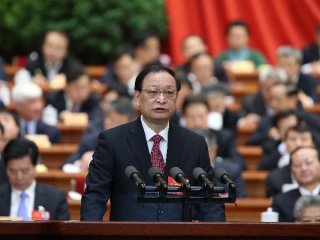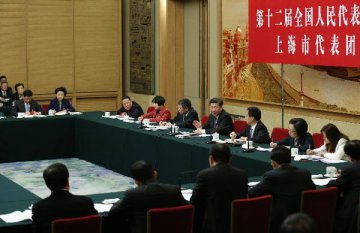
Entrepreneurship and innovation are of the essence in the Chinese economy, Chinese Premier Li Keqiang told China's top legislators in a annual gathering that ended Thursday.
"Shuangchuang," as the two terms are collectively known in Chinese, is part of a national plan to ride out a major economic transition and maintain sustained growth, Li Xuesong, an economist with the Chinese Academy of Social Sciences (CASS), has told Xinhua.
Official statistics show that a total of 4.4 million new businesses were registered last year in China, where the procedures for setting up a company have been increasingly simplified in recent years. Also in 2015, China recorded the highest number of patent applications in the world for the fifth year in a row.
Meanwhile, there are ample funds in the country to support creative ideas. Zero2IPO Research Center, a Beijing-based think tank, said China received venture capital funding to the tune of 129.3 billion yuan (about 20 billion U.S. dollars) in 2015, second only to the United States.
And the Chinese government plans to increase its investment in research and development to 2.5 percent of GDP by 2020 from the estimated 2.1 percent now. Jiang Peng, a 37-year-old entrepreneur, returned to China last year to set up an organic garbage processing firm in the eastern coastal city of Qingdao.
Now his company is engaged in talks with a major southern city to build a plant that can process 1,600 tons of waste a day. "It's much easier to start up a company here than in Europe. There is a lot of money, including venture capital. The market is huge, and the costs for high-end human resources are still quite low," Jiang said.
In a recent publication, global consultancy McKinsey noted that Chinese companies perform well in customer-focused and efficiency-driven innovation, including consumer electronics, Internet services and flexible manufacturing.
Yet much more needs to be done. Fueled by an expanding middle class, which the Switzerland-based financial services company Credit Suisse estimated to be 109 million last year, the demand by Chinese consumers for quality products and services is at an all-time high, and Chinese businesses are not yet up to the task.
Li, the CASS economist, said that given the obvious supply shortage at the high end, it is necessary for the world's most populous country to carry out supply-side reform and promote innovation. "Chinese tourists are spending big on foreign products, insurance and medical services on overseas trips," he said. "It will be a big lift for the Chinese economy if those demands are satisfied by Chinese businesses."
MULTI-PRONGED TRANSFORMATION
In order to secure a smooth and successful transition, China is sparing no efforts to remodel its existing manufacturing sector and foster a burgeoning services sector. Some low-end manufacturing firms are trying to find a way out by upgrading. In a textile plant in suburban Qingdao, workers now produce customized clothes ordered online with the help of mini-computers mounted on their sewing machines.
Some other manufacturers have moved inland to take advantage of relatively low costs. In the eastern part of central Henan province, which used to be largely rural, factories are springing up to produce refrigerators, beverages and clothes. Thanks to the ever greater demand and higher spending power of Chinese consumers, the tertiary sector now accounts for more than 50 percent of GDP, and is continuing to pick up momentum as more and more Chinese people seek a higher quality of life.
Gordon Orr, a senior adviser to McKinsey China, said he believes that e-tailing, logistics, health care, education and wealth management services are among the new propellers of China's economic growth. The various shifts indicate that the Chinese economy has entered a higher development level, which naturally means a slower pace of growth. Nonetheless, the 6.9-percent expansion China achieved in 2015, although the slowest for the country in 25 years, was still among the fastest in the world.
AMPLE LEEWAY TO MANEUVER
The transition is by no means without risks. Rising labor and rental costs have threatened small- and medium-sized enterprises, while declining profits are straining some large state-owned enterprises. "The key risk for the structural reform is whether the speed of growth of new sectors is able to offset the slowdown of old industries," said Li, the CASS economist.
The Chinese government is aware of the risks and is confident that it has ample policy room to keep economic growth on track and can reach the goal of doubling China's per capita GDP by 2020 from the 2010 level. Achieving that ambitious goal requires an annual growth of at least 6.5 percent. The official target for this year is between 6.5 percent and 6.9 percent.
Economists agree that Beijing still has the monetary and fiscal base to mitigate the downside. "Though transitions can be painful, the unemployment problem can be dealt with by speeding up reform, ending support for 'zombie enterprises' that are bleeding in the traditional industries, and redirecting the funds to support the unemployed as well as innovative start-ups," said Wang Tao, chief China economist at UBS, a banking giant. "You can't say the risk is small," she said. "But there are always ways to manage it."























Latest comments